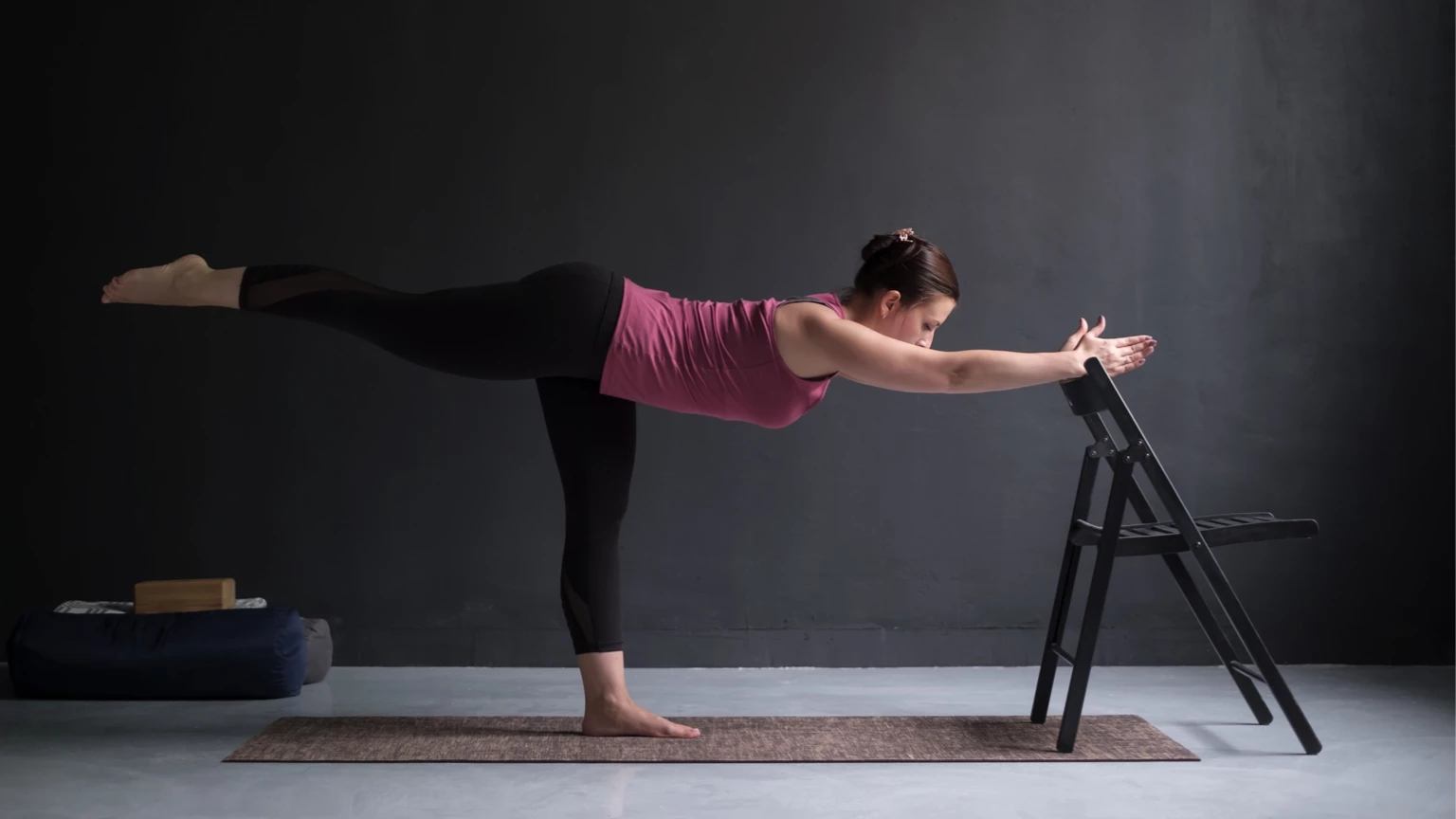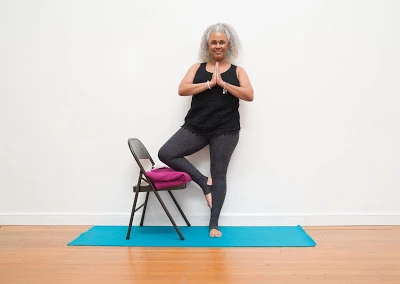Book Review -Jivana Heyman’s Accessible Yoga: Poses and Practices for Every Body

In May 2017, I participated in a four-day Accessible Yoga Training at the Integral Yoga Institute in New York City. At the time, I was moved by the depth of feeling, commitment, and knowledge conveyed by Jivana Heyman, the lead teacher of the training and founder of Accessible Yoga, an international non-profit advocacy and educational organization.
Reading Heyman’s soon-to-be-released book Accessible Yoga: Poses and Practices for Every Body (release date November 5, 2019) was like participating in that training all over again. His teaching message, whether in person or in writing, is completely consistent.
The reason for this is simple: Heyman lives the lessons he teaches. As evidenced by the personal stories he shares and his work as manifested in trainings, conferences, articles, and now, this book, the principles of Accessible Yoga are the same principles that have guided his own teaching. Now he is simply imparting them to other teachers and students of yoga.
I once again noticed something in his book that I observed at his training: Heyman has a unique ability to weave together the physical, subtle, and philosophical components of yoga in a way that feels completely natural, comprehensible, and, well, accessible. There is no better word to describe his teaching.
Yoga is for Every Body 
In his introduction to the book, Heyman relates his yoga journey, from his early days as an AIDS activist and yoga student in San Francisco to becoming a yoga teacher, to developing his approach to making yoga more accessible while teaching HIV/AIDS yoga classes in hospitals. He also sets out his intention for the book:
…In this book, I’ll explore the practice of yoga for real people with real, diverse bodies rather than start with the idea of yoga as a set of physical practices that we should all aspire to do and that can only be performed by people who we should aspire to look like. I’m starting with a different idea: we are all valuable and equally deserving of yoga. It is not just for a select few, but for every body. (p. xxii)
This captures the heart and soul of Accessible Yoga, and it is this essence that is interwoven throughout the following four parts of the book.
Heyman continues to flesh out the rudiments of the Accessible Yoga approach in Part One. He conveys his belief that yoga is a basic human right that every human being possesses and deserves. Rather than presenting the practice of yoga as the purely physical and somewhat gymnastic practice pervasive in advertising and social media, he explains, “Yoga is about calming the mind to connect with love in the heart.” (p. 8)
 Heyman also dives into Patanjali’s Yoga Sutra, examining some of the fundamental teachings of the seminal yoga text. His no-nonsense, crystal-clear paraphrasing of Patanjali makes the lessons of this 2,000-year-old scripture feel relevant and timely for the modern yoga practitioner.
Heyman also dives into Patanjali’s Yoga Sutra, examining some of the fundamental teachings of the seminal yoga text. His no-nonsense, crystal-clear paraphrasing of Patanjali makes the lessons of this 2,000-year-old scripture feel relevant and timely for the modern yoga practitioner.
Toward the end of this first section, Heyman reveals the key to making any yoga pose accessible to anyone: find the essence of the pose. When attempting an asana, he suggests first asking why do this pose? What are its benefits? The answers will reveal the essence of the pose. Once that essence is clear, experiment with ways to experience it standing on a mat, leaning against a wall, sitting in a chair, or lying on the floor or a bed. He advises the reader that in making asana accessible, “simplicity and creativity are key.” (p. 24)
Asana and Beyond
Part Two then delves into the nitty-gritty of the poses and how each one’s essence can be discovered and explored by practitioners of all shapes, sizes, ages, and abilities. Sarit Z. Rogers’s clear, detailed descriptions and accompanying photographs will be helpful for practitioners of all experience levels.
Part Three focuses on the more subtle practices of yoga beyond the physical poses: relaxing, breathing, and meditating. Part Four gives practical advice for developing a home yoga practice and for teachers who wish to make their group yoga classes more accessible.
Yoga for Diverse Communities
Interspersed throughout the book are photos depicting yoga teachers of many different shapes, sizes, ages, and ethnic backgrounds demonstrating a version of a pose that works for their bodies, along with a quote describing their experience of that pose. These teachers’ contributions to the book illustrate that the Accessible Yoga organization is fulfilling its stated mission of “building a strong network and advocating for a diverse yoga culture that is inclusive and welcoming.” (p. 3)
The depictions of these teachers contrast noticeably with the image of a yoga practitioner that is most often portrayed in popular culture: young, white, female, attractive, thin, hyper-flexible, toned, affluent, glowing with health. It is refreshing and encouraging to encounter these more varied images and perspectives, which reinforce Heyman’s message that the nature of yoga is inherently inclusive and welcoming of diversity.
It’s also exciting to see, in black and white, the work that Heyman and the Accessible Yoga organization are doing to challenge the status quo and change the wider public’s perception of who can and should practice yoga. As the title states, this truly is a yoga book for every body.
 Christine Malossi began practicing yoga in 1999. Based in New York City, she offers an alignment-focused, slow Vinyasa practice that cultivates awareness and equanimity. She is currently enrolled in an 800-hour course on the History, Literature, and Philosophy of Yoga (taught by Brenda Feuerstein, designed by the late Georg Feuerstein). Christine is a Registered Yoga Teacher with Yoga Alliance and has additional certifications in Therapeutic Yoga, Restorative Yoga, Accessible Yoga, and Functional Anatomy for Movement and Injuries. She attended the University of Pennsylvania and NYU and also spent many years studying classical ballet. Find her at christinemalossi.com.
Christine Malossi began practicing yoga in 1999. Based in New York City, she offers an alignment-focused, slow Vinyasa practice that cultivates awareness and equanimity. She is currently enrolled in an 800-hour course on the History, Literature, and Philosophy of Yoga (taught by Brenda Feuerstein, designed by the late Georg Feuerstein). Christine is a Registered Yoga Teacher with Yoga Alliance and has additional certifications in Therapeutic Yoga, Restorative Yoga, Accessible Yoga, and Functional Anatomy for Movement and Injuries. She attended the University of Pennsylvania and NYU and also spent many years studying classical ballet. Find her at christinemalossi.com.
Jivana Heyman, C-IAYT, E-RYT500, is the founder and director of Accessible Yoga, an international non-profit organization dedicated to increasing access to yoga teachings. Accessible Yoga offers Conferences, Trainings and a popular Ambassador program. He’s the author of the book Accessible Yoga: Poses and Practices for Every Body (Shambhala Publications), co-owner of the Santa Barbara Yoga Center, and an Integral Yoga Minister. Jivana has specialized in teaching yoga to people with disabilities, and out of this work, the Accessible Yoga organization was created to support education, training, and advocacy with the mission of shifting the public perception of yoga. More info at jivanaheyman.com
dedicated to increasing access to yoga teachings. Accessible Yoga offers Conferences, Trainings and a popular Ambassador program. He’s the author of the book Accessible Yoga: Poses and Practices for Every Body (Shambhala Publications), co-owner of the Santa Barbara Yoga Center, and an Integral Yoga Minister. Jivana has specialized in teaching yoga to people with disabilities, and out of this work, the Accessible Yoga organization was created to support education, training, and advocacy with the mission of shifting the public perception of yoga. More info at jivanaheyman.com
Photo credit: The tree pose photo is courtesy of Sarit Z. Rogers.
Resource-Heyman, Jivana. (2019) Accessible Yoga: Poses and Practices for Every Body. Boulder, CO: Shambhala Publications, Inc.



